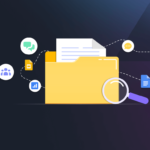As technology continues to transform, the demand for skilled Java Full Stack Developers is soaring high. With businesses actively relying on web-based applications, there’s a rising demand for professionals who can tackle both front-end and back-end development using Java technologies. By mastering Java Full Stack Development, one positions themselves at the forefront of innovation and employability. In 2024, this Java Full Stack developer skill set is a golden opportunity for embarking on a fulfilling and lucrative career. The career path offers numerous benefits, including lucrative salaries, a plethora of job opportunities across industries, and the opportunity to work on cutting-edge projects. The following blog serves as your roadmap, guiding you through the essential Java Full Stack course skillsand resources necessary to become a skilled Java Full Stack Developer.
Why Java Full Stack Development in 2024?
A question that often comes up in aspiring minds is why Java reigns supreme in web development. Well, Java’s persistent popularity emerges from its inherent strengths. To begin with, unlike some languages restricted to specific platforms, Java’s “Write Once, Run Anywhere” principle enables code to easily run on different operating systems, making applications future-proof and adaptable. Moreover, as web development trends towards full-stack expertise, those who hold skills of Java Full Stack developer stand as invaluable assets. They hold the unique ability to tackle both front-end and back-end tasks, simplifying development processes and minimizing costs for organizations. This essential Java Full Stack skillsset promotes better team communication and troubleshooting, improving overall project efficiency.
Further, according to a popular Java Full Stack developer course, the demand for Java Full Stack developers is booming globally, with lucrative salaries ranging from INR 5 lakhs to INR 14.5 lakhs annually in India alone. The burgeoning IT sector in India further fuels this demand, providing abundant career prospects for skilled developers. Thus, embracing Java developer skills in 2024 is a dependable method to embark on a rewarding career path in this dynamic field.
Top 5 Essential Skills for a Java Full Stack Developer
As discussed in the popular Full Stack Java training course, a Java developer is responsible for designing, developing, and maintaining Java-based programs. The skills of Java Full Stack developerstypically include writing well-structured and developed code that would withstand rigorous testing and analysis. So, the essential Java Full Stack developer skills for boosting your career are:
- JavaScript: JavaScript is valuable for improving web pages with dynamic characteristics such as real-time updates, interactive maps, and animations. Java developers use frameworks such as React Native, Ionic, and Angular to simplify development. Further, according to a top-notch Java Full Stack course, JavaScript also fuels the virtual reality industry, evidenced by platforms such as GitHub, which it allows for server-side rendering via Node.js. Moreover, front-end development heavily relies on JavaScript for building immersive user experiences, demonstrated by features such as drag-and-drop functionality.
- HTML/CSS: Java front-end developers use HTML, CSS, and JavaScript to build user-friendly websites and applications, concentrating on appearance and layout. HTML structures content, defining elements such as paragraphs and images, while CSS improves presentation, enabling adaptation for different devices. Together, as per a popular Full Stack Training course, they guarantee seamless user interaction and navigation. HTML allows for document display and hyperlink embedding, while CSS controls design aspects such as color and layout, independent of HTML.
- Git and GitHub: Java Full Stack developers must grasp Git and GitHub. According to a popular Java Full Stack developer course online, Git aids in version control, tracking changes, and managing codebase, vital for glitch-free software development. It allows team collaboration and streamlines code review. GitHub, a cloud-based platform, hosts Git repositories, permitting global collaboration and social coding. It’s essential for project management, permitting teams to work remotely and achieve milestones.
- Backend Languages: Backend development encompasses server-side processes unseen by users, managing data storage, and guaranteeing website functionality. Java Full Stack developers well versed in a Java Full Stack course handle tasks such as APIs and libraries. Key languages involve PHP, C++, Java, and Python, alongside frameworks such as Node.js and Django, essential for crafting mobile apps and websites.
- Spring Frameworks: As discussed in the Full Stack Java developer course, the Spring framework transforms business object management with its blend of techniques such as Aspect-Oriented Programming and dependency injection. Its lightweight design streamlines web application development, making it a preferred choice among Java EE7 developers for building scalable enterprise applications.
Conclusion
To conclude, if you wish to become a Full Stack Java Developerin 2024, the above guide is tailored just for you! Remember, the key is to develop a strong foundation in Java Full Stack developer skills, master both front-end and back-end technologies, and continuously enhance your skills. So, don’t be afraid to harness the power of online resources, practice with personal projects, and connect with the developer community. Take the first step today towards a lucrative career in Java Full Stack development by mastering Java Full Stack Developer Skills!







